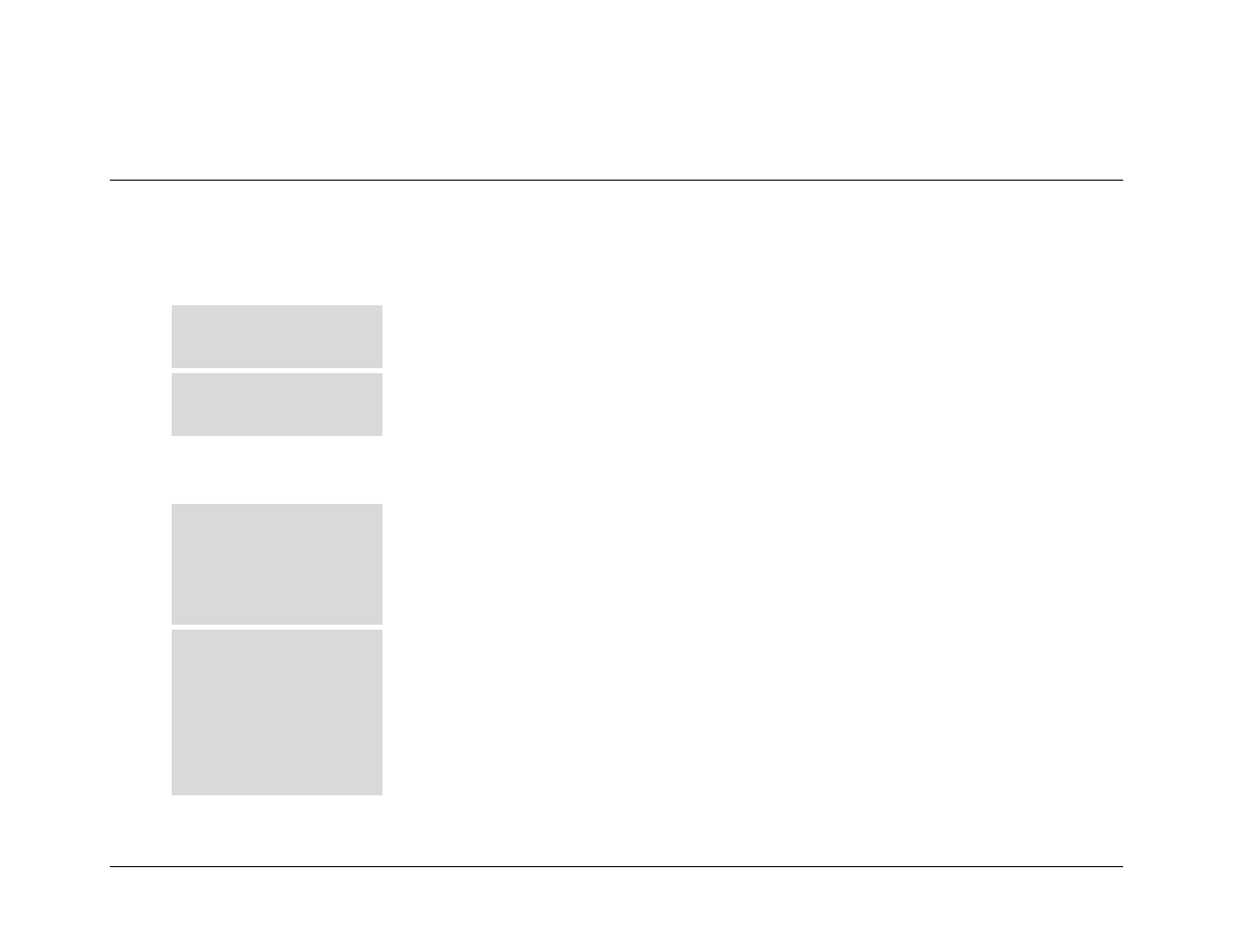D.3.4.5 instruction code qualifier – Comtech EF Data CDD-562L User Manual
Page 222

CDD-562L/564 Demodulator with IP Module
Revision 2
Appendix D
MN/CDD564L.IOM
D–6
For Example: TFQ for Tranmsit FreQuency; RMD for Receive MoDulation type, etc. This aids in the readability of the message, should
it be displayed in its raw ASCII form. Only upper case alphabetic characters may be used (A-Z, ASCII codes 65 - 90).
D.3.4.5 Instruction Code Qualifier
This single character further qualifies the preceding instruction code. Code Qualifiers obey the following rules:
1. From Controller-to-Target, the only permitted values are:
=
(ASCII code 61
This code is used as the assignment operator, and is used to indicate that the parameter defined by the preceding byte
should be set to the value of the argument(s) that follow it. For example: In a message from Controller-to-Target,
TFQ=0950.0000 would mean ‘set the Tx frequency to 950 MHz’
?
(ASCII code 63)
This code is used as the query operator, and is used to indicate that the Target should return the current value of the
parameter defined by the preceding byte. For example: In a message from Controller-to-Target, TFQ? would mean ‘return
the current value of the transmit frequency’.
2. From Target-to-Controller, the only permitted values are:
=
(ASCII code 61)
This code is used in two ways:
First, if the Controller has sent a query code to a Target (for Example: TFQ?, meaning ‘what is the Tx frequency?’), the
Target would respond with TFQ=xxxx.xxxx, where xxxx.xxxx represents the frequency in question.
Second, if the Controller sends an instruction to set a parameter to a particular value, and if the value sent in the argument
is valid, then the Target will acknowledge the message by replying with TFQ= (with no message arguments).
!
(ASCII code 33)
This code is only used as follows:
If the controller sends an instruction to set a parameter to a particular value, then, if the value sent in the argument is not
valid, the target will acknowledge the message by replying, for example, with TFQ! (with no message arguments). This
indicates that there was an error in the message sent by the controller.
If the controller sends an instruction code which the target does not recognize, then the target will acknowledge the
message by echoing the invalid instruction, followed by the ! character. Example: XYZ!
At present, the CDD software is not organized to categorize various error codes, so it combines various errors into a single
code (!).